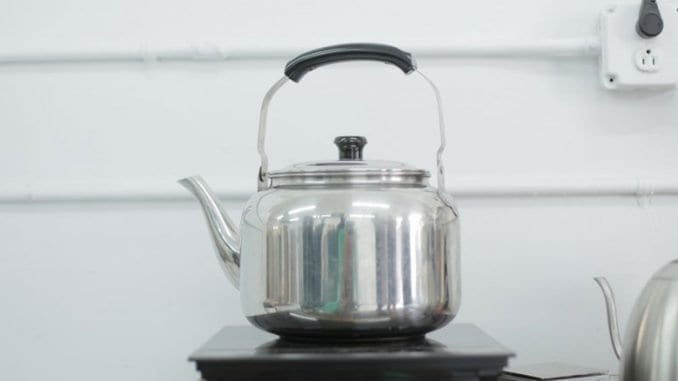
In Part Two of this series, we covered the basic theories of adult education and shared some practical ideas on how to empower all types of learners in your barista training program. In this post we’ll help you assess your limitations and iron out the content of your classes.
BY DIANA MNATSAKANYAN
SPECIAL TO BARISTA MAGAZINE
All photos by Aaron Tran
When planning a coffee training it’s important to remember that a lesson plan that specifically addresses the needs and limitations of your shop is vital. One size does not, and never will, fit all. Consider the following items when designing your curriculum:
Know Your Space
Understanding how much physical space you have will greatly dictate how large your classes can be. If you’re operating in a small shop with a single-group machine, consider only training one person at a time in order to give them more room (literally and figuratively) to learn. If you have access to a coffee lab or simply have a spacious bar, you’ll have the capacity to train a larger group of individuals.
Pro tip: I’ve found that the maximum number of baristas that I can train in a given session rarely exceeds four people, especially if I’m giving them hands-on time to practice. However, if you’re a training wizard and can handle more people without compromising the quality of your learners’ educations, go for it! But also maybe consider bringing on an assistant.

Consider Your Time
Time is important in two ways:
First, you must consider how much time you have to work with. The depth of training, number of students and topics covered should be factored into this assessment. Will your class be one eight-hour sitting? Will you split it up into two or three four-hour sessions? How much time will you allow for lectures, independent study, pop quizzes, and shadowing shifts? I highly recommend laying out a timeline, as it can be incredibly easy to veer off topic, lose track of time and accidentally reach the end of your session without covering essential information.
Pro tip: Don’t forget to factor in food, water and bathroom breaks, especially if you’re going to be tasting coffee. Going on breaks can add anywhere between 15 minutes to an hour of time to your training session.
The second time factor to consider: what time of day will you be training? Much of this is dictated by your space limitations as well as the availability of your trainees. Regardless, it’s best to understand the flow of your shop so that you’re not conducting an on-site barista class during your morning rush, or fighting rush hour traffic to try to make it to your training lab on the other side of town on time.

Address Your Weaknesses
When you’re brainstorming your coffee curriculum, consider the areas of weakness that you’d like to tackle in your business. What do you see your baristas struggling with the most during their shifts? What are your most common customer complaints? What are some areas that you’d like to see your barista team improve on as a whole? Find ways to address these weak areas in your new hire trainings as a preventative measurement.

Pinpoint Your Goals
Do you pride yourself in having the most geeky, knowledgeable staff in town? Invest in several hours of espresso extraction and milk science education.
Are your baristas known for being the fastest drink-slinging coffee staff in the neighborhood? Focus on including skill drills and timed bar practice to help baristas perfect their speedy bar flow.
Do you want your employees to exhibit next-level service and friendliness to all who walk through your doors? Consider including in-depth hospitality training into your lesson plan to give your baristas a clear vision on how to handle every customer interaction.

Focus on Practicality
This seems like a no-brainer, but be practical in the structure of your lesson plans! Train new hires to bus tables, use the register, and restock the condiment bar properly before they engage with high-level coffee science. A new employee that understands the chemistry of espresso extraction but doesn’t know how to ring up a mocha will do very little to help your shop during a rush. I cannot stress this enough: be sure that your lesson content is immediately applicable to the workplace.
Survey Your Baristas
I encourage you to talk to your existing staff and ask them for their input. Your people on the ground level will have the best understanding of what your business’s needs, weaknesses and strengths are. Hear them out (especially those veteran baristas!) and trust them.
In our final installment of this series, we’ll share some practices that can help sustain and create a culture of proactive education in your barista team. After all- what’s the point of doing all this work if you can’t maintain it? Stay tuned.
 ABOUT THE AUTHOR
ABOUT THE AUTHOR
Diana Mnatsakanyan is a cat-lady-turned-barista living in Charlotte, North Carolina. A workaholic and coffee nerd, she is currently in the process of opening her first coffee shop, Undercurrent Coffee. She also dabbles in barista blogging, coffee consulting and Netflix binge-watching (she highly recommends Unbreakable Kimmy Schmidt and 30 Rock).

